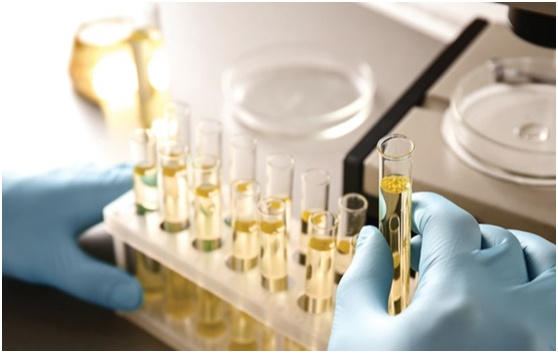

A team of Canadian researchers may have found a low-cost, widely available alternative to predicting a positive fecal calprotectin test: urinalysis strips.
Preliminary findings from the ongoing study revealed that testing prepared stool samples for fecal leukocyte esterase yields results that are highly predictive of positive fecal calprotectin tests, potentially reducing costs and speeding time to clinically actionable findings.
“I was rotating on a medical biochemistry unit, and my colleagues there asked why gastroenterologists don’t use urine test strips to test for fecal calprotectin since it’s a white blood cell protein that is present in the stool,” said Roberto Trasolini, MD, a fellow in gastroenterology at the University of British Columbia, in Vancouver.
A literature search showed that the approach was untested. “So, we decided to study it, since urine strips are extremely inexpensive and could prove to be really useful in these situations.”
Dr. Trasolini and his colleagues included all inpatient and outpatient stool samples that had been tested for calprotectin by the Vancouver General Hospital laboratory between February and November 2020. Using an unmodified Roche Cobas Chemstrip urinalysis test strip, the samples were also simultaneously tested for fecal leukocyte esterase.
Results of the fecal leukocyte esterase testing were reported as 0-4+ according to visual interpretation, while calprotectin results were reported as microgram per gram of stool. The researchers calculated the sensitivity and specificity of the urinalysis test strip, as well as the area under the receiver operator characteristic curve (AUROC).
Presenting the findings at the 2021 Canadian Digestive Diseases Week (abstract A20), Dr. Trasolini said his group collected 26 samples. Using a fecal calprotectin cutoff of greater than 120 mcg/g as a gold standard, the researchers calculated an AUROC of 0.89±0.06 for the urinalysis strip. Analysis of the ROC curve also revealed that a leukocyte esterase reading of 2+ or greater had the best test characteristics.
Using this leukocyte esterase cutoff, the researchers found that 22 of the 26 samples were concordant, yielding an accuracy of 80.8%, a sensitivity of 90.9% and a specificity of 73.3%. The positive likelihood ratio was 8.07 and the negative likelihood ratio was 0.29, they reported.
In other words, Dr. Trasolini told Gastroenterology & Endoscopy News, “22 of the urine test strips predicted the same thing that the fecal calprotectin would have predicted. We don’t know if the remaining four strips were actually wrong, so for all we know the urine strips could actually be more accurate than the fecal calprotectin. But at any rate, the study tells us that the two approaches are very close and agree most of the time.”
Where the two approaches diverge is in their ability to predict a patient’s level of inflammation, Dr. Trasolini added. “Fecal calprotectin is a precise number, whereas the urine test strips are simply qualitative.”
Despite this difference, the researchers concluded that using a urinalysis test strip with a prepared stool sample yields comparable results to those from positive fecal calprotectin tests. If proven to be independently reliable, use of fecal leukocyte esterase may ultimately reduce costs and shorten time to results, according to the investigators.
“We think it might be a really good rule-out test or screening tool,” Dr. Trasolini said. “The nice thing about the urine test is that it only takes a minute. You just put a drop of stool on the strip and have an answer right away, whereas calprotectin takes a few days or even a few weeks. We think it may ultimately find its place as a rapid on-site test that would likely prove useful for patients in the emergency department, as well as among inpatients.”
The researchers hope to ultimately enroll as many as 100 patients into the ongoing trial.
Nancy Fu, MD, a clinical assistant professor of medicine in the Division of Gastroenterology at Richmond General Hospital, in British Columbia, called the study a “great concept. Fecal calprotectin and fecal leukocytes are closely related, and they both test for luminal inflammation,” she said. “Prior to the availability of fecal calprotectin, we often ordered fecal leukocytes. Ultimately, this may be helpful to help rule out inflammatory disease, as well as to differentiate between IBD and IBS, and help minimize additional tests in IBS patients.”
